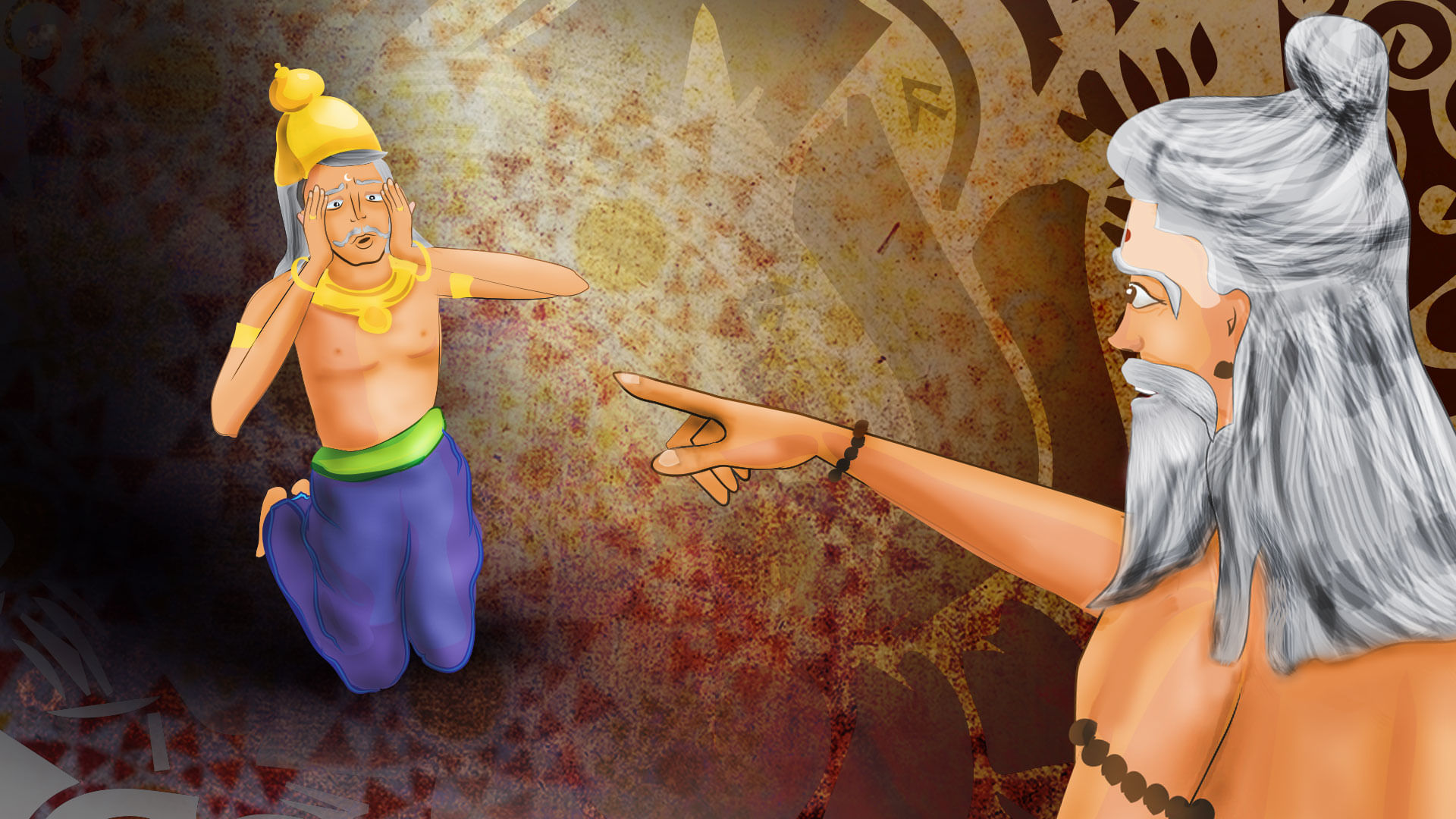Mahabharat Episode 3: Curses or Blessings?
In the last episode, we saw how Kacha “infiltrated” the asura camp, to acquire the secret of the Sanjeevani mantra from Shukracharya. Shukracharya’s daughter, Devyani, fell in love with Kacha, but Kacha considered her a sister, and left, refusing to listen to her entreaties. Here’s the next episode of the story.
Devyani and Sharmishtha
Sadhguru: Devyani was close friends with Sharmishtha, the daughter of the Asura king of that area, Vrishaparva. A certain incident occurred that, in a way, became the root of the Kuru Dynasty. The two young girls went to the river to bathe. Sharmishtha was an Asura princess, Devyani was the daughter of Shukracharya, a priest. That means she was from a Brahmin clan, which in those days were considered as the highest among the social groups. That is why the two girls kept their clothes and jewelry separately when they went to bathe.While they were playing in the river, the clothes were blown about in a big wind and were mixed up. When the two girls came out of the river, naturally in a hurry to get dressed, Sharmishtha by mistake put on parts of Devyani’s clothes. Then, half in jest but half establishing her superiority, Devyani said, “How come you are wearing the clothes of your father’s guru’s daughter? How does it feel? And how is it appropriate?”
Sharmishtha realized the mistake. But being a princess, she flew into a rage and said, “Your father is a beggar. He bows down in front of my father. You live from what my father doles out. You better know your place.” And she pushed her into a pit. Devyani fell down. Sharmishtha left her there and went away in a huff.
Subscribe
When Devyani came back home, she plunged into her father’s lap and cried for revenge, saying, “You have to teach this princess a lesson.” For insulting his daughter, Shukracharya demanded the princess should become a maid to his girl. The king had no choice because without Shukracharya, who could bring the dead back to life, he would be lost.
Throughout the story of Mahabharat, there are curses and boons. But you do not know whether a curse is a boon or a boon is a curse, because life has its own way of mixing things up. A curse becomes a boon – a boon becomes a curse. So Sharmishtha was cursed to be a maid to Devyani. Then Devyani’s marriage was arranged with Yayati. She insisted that Sharmishtha should follow her as her personal maid to her new home.
Devyani had already had her revenge on Sharmishtha and should have left it there, but she wanted to rub it in some more. So Sharmishtha came with her as her maid after the marriage. Yayati and Devyani lived together as husband and wife, and they had a son whose name was Yadu. The Yadavas come from this Yadukula.
Although Sharmishtha was Devyani’s maid, being a princess, she carried herself with a certain dignity. She made herself even more attractive than Devyani. Inevitably, Yayati fell in love with her. A secret love affair happened, and they had a child. That child was Puru, who became one of the fathers of the Kuru dynasty.

Yadu, as Yayati’s first son, should have naturally become the king, but he did not because of a certain misdemeanor. When Shukracharya realized that Yayati had betrayed his daughter and had a child with the maid, he cursed him: “May you lose your youth.” So Yayati became an old man.
He could not come to terms with this. When Yadu grew up and became a fine youth, Yayati asked him, “Give me your youth and let me enjoy it for a few years. Then I will give it back to you.” Yadu said, “Nothing doing. First you cheated my mother. Now you want to cheat me out of my youth. No.” Then Yayati cursed Yadu: “May you never become the king.”
Yayati’s second son Puru, who was born to Sharmishtha, voluntarily offered his youth to his father, saying, “Father, enjoy the youth. It doesn’t mean anything to me.” Yayati became youthful again and lived as a young man for a period of time. When he felt he was done with it, he gave back the youth to his son Puru and made him the king.
To be continued...
Editor’s Note: A version of this article was originally published in Isha Forest Flower June 2015. Download as PDF on a “name your price, no minimum” basis or subscribe to the print version.



